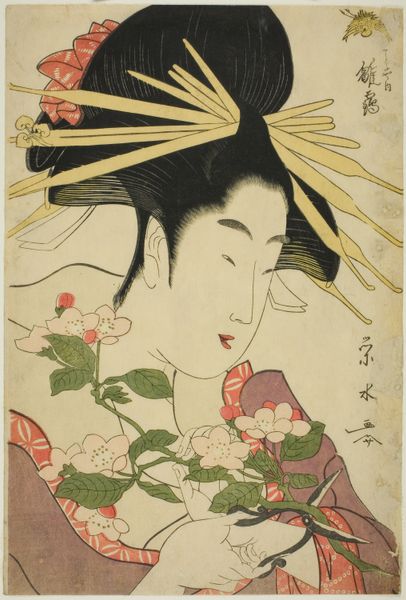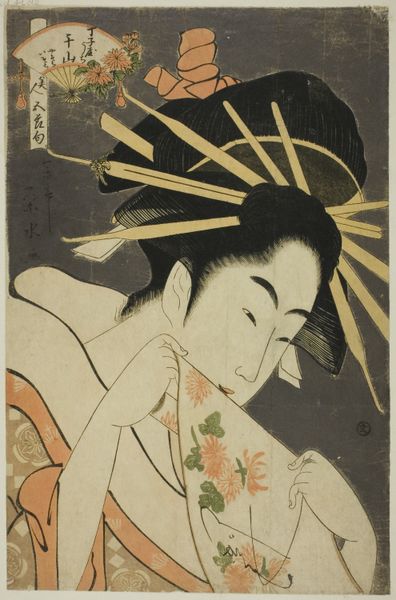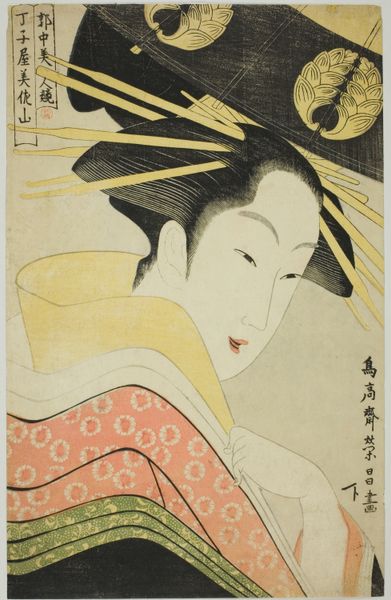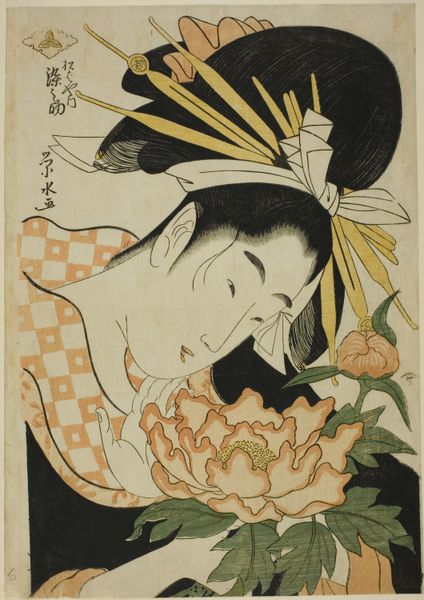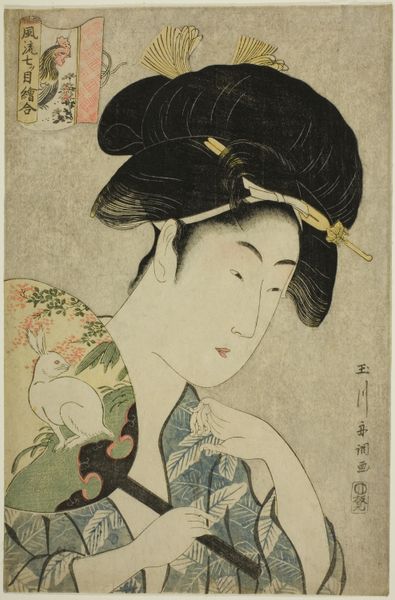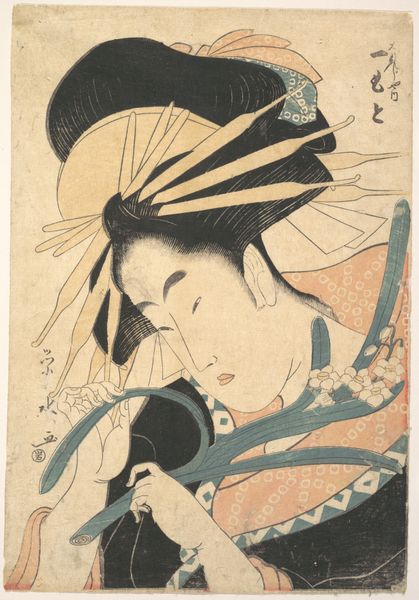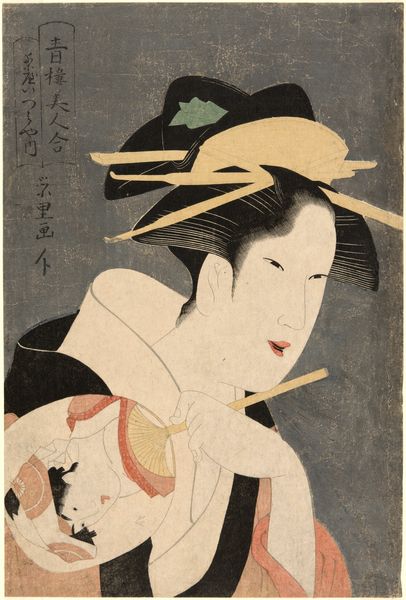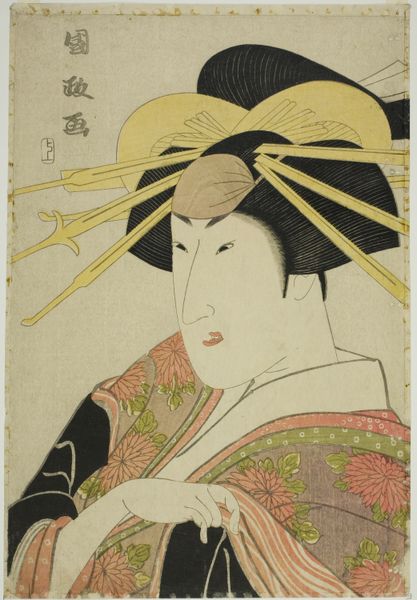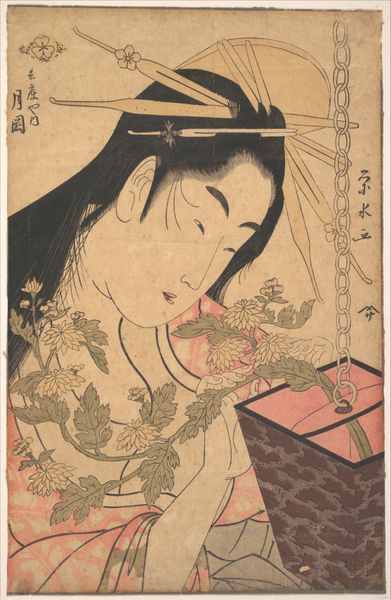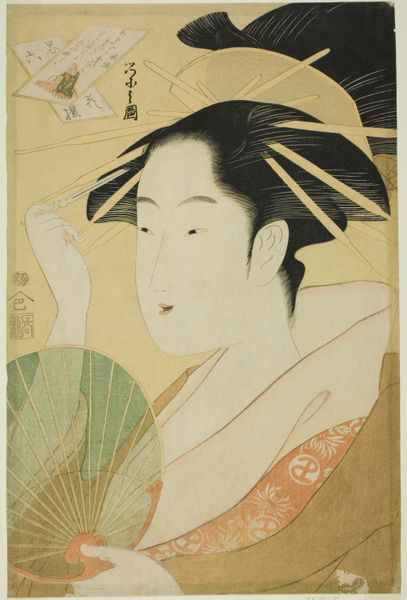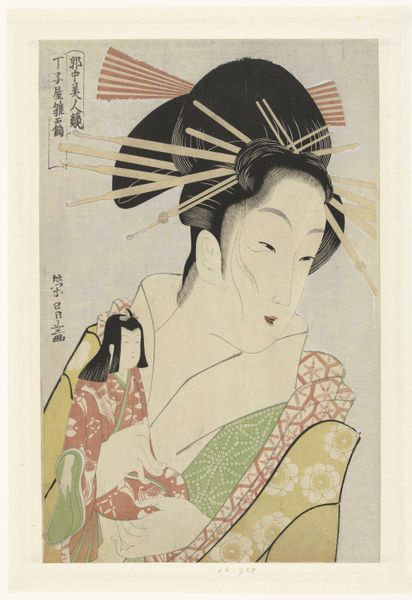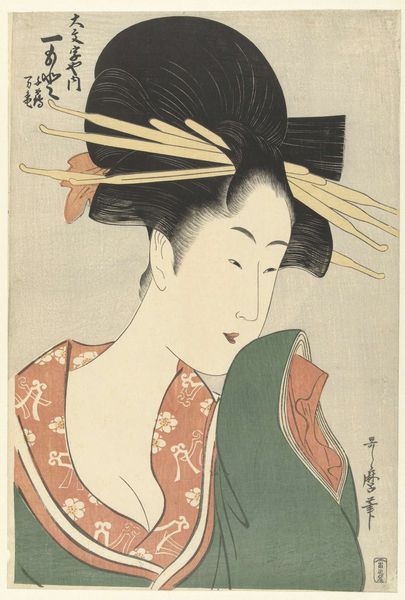
The Courtesan Hanahito of the Ogiya and attendants Sakura and Momiji, from the series "Beauties of the Five Festivals (Bijin gosekku)" c. 1795 - 1800
0:00
0:00
print, woodblock-print
#
portrait
# print
#
asian-art
#
ukiyo-e
#
woodblock-print
Dimensions: 38.2 × 25.5 cm (15 × 10 in.)
Copyright: Public Domain
Curator: What strikes me immediately is the exquisite, almost ethereal quality of this image. The delicate lines, the soft colors… it possesses such serene beauty. Editor: Absolutely. It’s fascinating to examine this piece by Ichirakutei Eisui, a Japanese woodblock print from around 1795 to 1800, now held at the Art Institute of Chicago. It’s titled "The Courtesan Hanahito of the Ogiya and attendants Sakura and Momiji, from the series 'Beauties of the Five Festivals.'" Seeing it through a contemporary lens, one has to acknowledge the complex social and political layers inherent in the representation of women, particularly within the ukiyo-e tradition. Curator: Ukiyo-e prints frequently used symbols and visual cues that would have resonated deeply with its intended audience, carrying layered meanings related to beauty, status, and perhaps even coded commentary on societal norms. Look, for example, at the object in her hands. It's elaborately decorated and suggestive of refinement, and perhaps an offering of sake? I feel there is a celebration taking place here, maybe the expression of gratitude to mother nature for life. Editor: Yes, the act of examining a seemingly simple depiction of beauty is tied to very specific structures of power, gender roles, and economic realities within Edo society. The very beauty is constructed and consciously displayed to a beholder class that controlled it. The image also reinforces ideas around labor since the beauty on display and the setting require others’ hands, lives, and energy for completion. Curator: Do you agree that it portrays ideals and maybe some unspoken critiques? It reminds me of porcelain because of its luminous beauty. Editor: That’s definitely part of ukiyo-e prints! They present, and sometimes subtly subvert, the established order, inviting discourse around identity, race, and class dynamics in a pre-modern context. Curator: Reflecting on the visual language—the flowing lines, the restrained color palette—reveals a culture deeply invested in aestheticising daily life, turning even commonplace activities into scenes of beauty. Editor: Exactly. These prints not only functioned as a record of cultural practices, but also engaged in the social politics of their time. Curator: Thank you! This reflection allowed us to travel through both space and time. Editor: Certainly! A glimpse into the past that resonates powerfully with contemporary dialogues about identity, power, and representation.
Comments
No comments
Be the first to comment and join the conversation on the ultimate creative platform.
